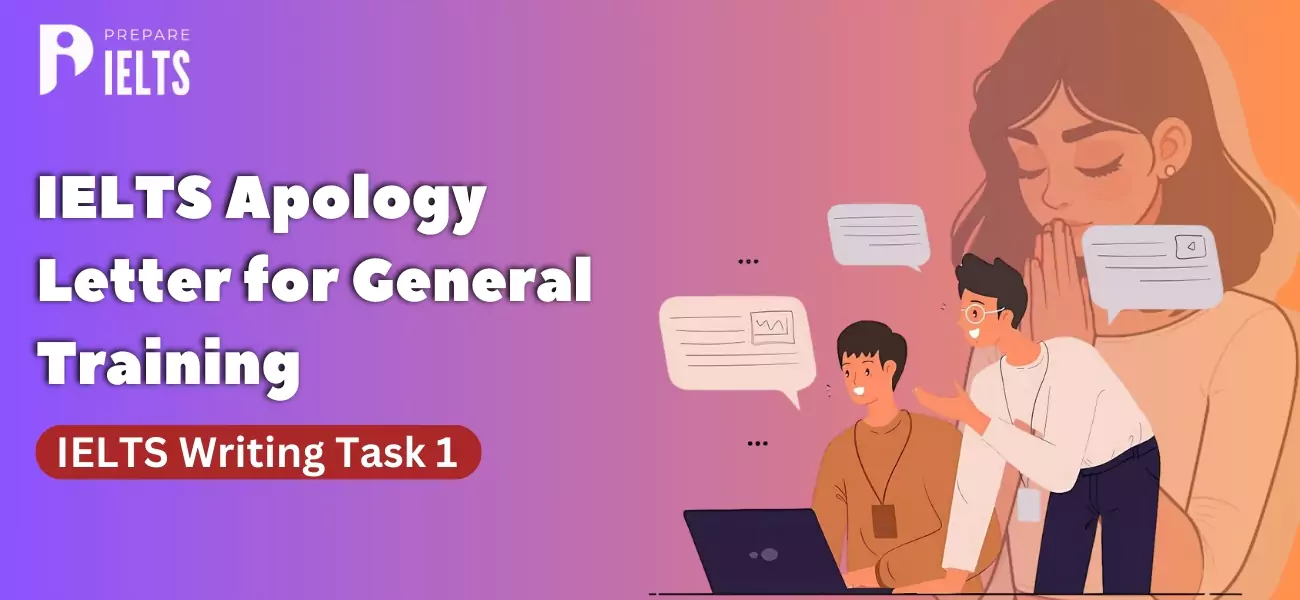
Overview
Are you intending to take an IELTS reading test and want to practice or get a sense of the types of passages and questions that will be asked? If so, then this blog is for you!
The reading passage "The Return of the Huarango" is from the academic portion of the IELTS reading test. It includes certain categories of IELTS reading questions. Take an IELTS reading practice exam if you wish to become acquainted with all of the question kinds. So, let's start with the blog!
The Return of the Huarango - IELTS Reading Passage
-
The Peruvian south coast is a 2,000-kilometer-long strip of desert trapped between the Andes and the Pacific Ocean. It is also one of the most endangered ecosystems on the planet. Because it seldom rains there, the only year-round water source is buried tens of metres under the surface. This is why the huarango tree is so well adapted to living there: it has the longest roots of any tree on the planet. By stretching down 50–80 metres, they suck up water for the tree while simultaneously bringing it up into the upper subsoil, providing a water supply for other plant life.
-
Dr. David Beresford-Jones, an archaeobotanist at Cambridge University, investigated the role of the huarango tree in landscape change in southern Peru's Lower Ica Valley. He regarded the huarango as an important element of the ancient people's diet because it could reach underground water sources, enabling inhabitants to endure years of drought when their crops failed to thrive. Crops, on the other hand, gradually supplanted Huarango trees over time. When natural forests are chopped down, erosion occurs because there is nothing to hold the soil in place. As a consequence, when the huarangos go, the area becomes desolate. Nothing is growing in the Lower Ica Valley right now.
-
For ages, the huarango tree has also been vital to the dwellers of the surrounding Middle Ica Valley. They ate items made from their seed pods and grew crops underneath them. Its branches were used to generate charcoal for cooking and heating, while its leaves and bark were utilised to manufacture herbal remedies, and its trunk was used to build houses. It is, however, rapidly declining. The great bulk of the valley's huarango woods have already been cleared for fuel and agriculture – first smallholdings, but now enormous farms producing foodstuffs for the worldwide market.
-
"99 percent of the trees that were here 1,000 years ago have already perished," says botanist Oliver Whaley of London's Kew Gardens, who is conducting a pioneering initiative to protect and restore the fast-decreasing ecosystem alongside ethnobotanist Dr. William Milliken. To be successful, Whaley must win the favour of the villagers, which has forced him to overcome local preconceptions. "Increasingly ambitious communities feel that growing food trees in your yard or on your street implies that you are poor and must continue to cultivate your food," he adds. Whaley is encouraging locals to rekindle their love of harangues in order to avoid the Middle Ica Valley from following in the footsteps of the Lower Ica Valley. "It's a process of cultural resuscitation," he says. He has already organised a huapango festival to restore people's pride in their natural past, and he has assisted local schoolchildren in planting thousands of trees.
-
"You should cultivate trees," Whaley continues, "which will assist them all in attempting to get consumers involved in reforestation activities." As a consequence, he has been engaging with people to attempt to transform huarango byproducts into food in order to offer a sustainable life. When you simmer the beans, you obtain a rich, dark sauce that tastes like molasses. It's also delicious in drinks, soups, and stews. ” The seeds and shells may be mixed to produce a rich, chocolaty "coffee," and the seeds can be crushed into flour for pastries. "It's rich with vitamins and minerals," is what Whaley has to say about it, and he's right.
Also read an another IELTS Reading Answers: The Step Pyramid of Djoser
-
Some farmers are planting huarangos. Alberto Benevides, owner of Ica Valley's first organically cultivated ranch, which Whaley helped build, has been planting the evergreen for 13 years. He produces maple syrup and flour, which he sells at Lima's organic farmers' market. His acreage is modest and does not now provide him with enough revenue to live on, but he anticipates that it will improve in the future. "The fresh vegetable business in Peru is rapidly developing," says Benevides. I'm investing for the future.
-
Although Whaley may convince the people to rekindle their bond with the huarango, the large farms are a significant danger. A couple of them slice through trees, breaking up the paths that allow animals, birds, and pollen to travel freely over the narrow wooded strip. He's persuading landowners to just allow him to construct forest zones on their property in the hopes of reversing this tendency. He believes that the additional forest will benefit agriculture by decreasing evaporation, providing a habitat for insects that manage pests, and reducing the demand for water.
-
'If we can record biodiversity and understand how everything works, we'll be ready to go ahead.' "Desert landscapes may be reduced to nearly nothing," adds Whaley. "It's not like a jungle, where a lot of space is required." Life has always been restricted to tunnels and islands in this location. If just a few trees remain, the colony may quickly develop since it is used to taking advantage of water when it comes. He believes that his method might be used as a model in other arid areas throughout the globe. If you can do it here, in the world's most unstable system, it's a true message of hope for other nations, particularly in Africa, where people are suffering from starvation and can't afford to leave for the rain.’
Also read: Vocabulary words for IELTS: Difficult & New Words For 2024
The Return of the Huarango - Questions and Answers
Question 1 to 5
Complete the notes below.
Choose ONE WORD ONLY from the passage for each answer.
Write your answers in boxes 1–5 on your answer sheet.
The importance of the huarango tree
– Its roots may stretch up to 80 meters into the ground.
– ………….. can be penetrated deeply under the earth.
– A good while ago, it was a critical component of the people' 2.....................
– Helped people to survive periods of 3…………………..
– Prevents 4………………… of the soil
– Guarantees that land will not become a 5.....................
Answer 1: water
Explanation 1: According to paragraph 1, lines 6 to 8 read, “They stretch down 50–80 meters and, as well as sucking up water for the tree, they bring it into the higher subsoil, creating a water source for other plant life.” This demonstrates that by reaching down 50–80 meters (deep below the soil), the Huarango tree (they) is able to absorb (access) water.
Answer 2: diet
Explanation 2: According to line 3 in paragraph 2, “He believes the huarango was key to the ancient people’s diet and, because it could reach deep water sources, it allowed local people to withstand years of drought when their other crops failed.” the author states that the Huarango tree must have played an important role in the food of the ancient (long ago) people who lived in the area. This is because the tree's thick roots effectively collect groundwater, enabling it to withstand drought. Therefore, diet is the right response.
Answer 3: drought
Explanation 3: According to lines 3 to 7 of paragraph 2, “He believes the huarango was key to the ancient people’s diet and, because it could reach deep water sources, it allowed local people to withstand years of drought when their other crops failed.” The Huarango tree must have aided the prehistoric people because of its extensive roots, which allowed it to effectively gather groundwater and endure (withstand) dry spells for years.
Answer 4: erosion
Explanation 4: In paragraph 2, lines 6 to 8, it is written, "But over the centuries, huarango trees were gradually replaced with crops." Because there is nothing to hold the soil in place when native woodland is cut down, erosion results; these lines highlight how the crop fields that were used in place of the Huarango tree couldn't hold the soil, which led to soil erosion. The Huarango trees held the earth in place, preventing erosion, so "erosion" is the appropriate response.
Answer 5: desert
Explanation 5: According to lines 8 and 9 of the paragraph, “So when the huarangos go, the land turns into a desert. Nothing grows at all in the Lower Ica Valley now.” This demonstrates how the eradication of Huarango trees makes the region a desert. It demonstrates how these trees kept the area from turning into a desert.
Also Check: IELTS One Skill Retake- Retaking IELTS Exam 2024
Question 6 to 8
Complete the table below.
Choose NO MORE THAN TWO WORDS from the passage for each answer.
Write your answers in boxes 6-8 on your answer sheet.
| Traditional Uses of Huarango Tree | |
|---|---|
|
A section of the tree |
Traditional use |
|
6……………….. |
Fuel |
|
7………………. and ………………. |
Medicine |
|
8……………… |
Construction |
Answer 6: huarango branches / the branches/ its branches
Explanation 6: According to lines 3 to 5 of paragraph 3, “Its leaves and bark were used for herbal remedies, while its branches were used for charcoal for cooking and heating, and its trunk was used to build houses.” Huarango tree branches were utilised as fuel, specifically charcoal, for heating and cooking. The author claims that branches and leaves are employed as cooking fuel. Huarango branches are the right response as a result.
Answer 7: bark, leaves
Explanation 7: According to lines 3 to 5 of paragraph 3, “Its leaves and bark were used for herbal remedies, while its branches were used for charcoal for cooking and heating, and its trunk was used to build houses.”
Answer 8: huarango trunk/ the trunk/ its trunk
Explanation 8: According to lines 3 to 5 of paragraph 3, “Its leaves and bark were used for herbal remedies, while its branches were used for charcoal for cooking and heating, and its trunk was used to build houses.”
Also read: A Guide To Womenomics - IELTS Reading Answers
Question 9 to 13
Do the following statements agree with the information given in Reading Passage 1?
In boxes 9-13 on your answer sheet, write:
TRUE: if the statement agrees with the information
FALSE: if the statement contradicts the information
NOT GIVEN: if there is no information on this
-
Whaley has discovered some of the traditional applications of huarango products from local households.
-
Alberto Benevides, a farmer, is now generating a great income from huarangos.
-
Farmers' assistance is needed by Whaley to help maintain the area's biodiversity.
-
To be successful, Whaley's idea must be scaled up to a massive scale.
-
Whaley intends to establish a similar initiative in Africa.
Answer 9: Not Given
Explanation 9: There isn't any mention because Whaley was informed by these local households about the customary applications of huarango goods.
Answer 10: False
Explanation 10: According to paragraph 6, lines 1 to 6, “Alberto Benevides, owner of Ica Valley’s only certified organic farm, which Whaley helped set up, has been planting the tree for 13 years. He produces syrup and flour and sells these products at an organic farmers’ market in Lima. His farm is relatively small and doesn’t yet provide him with enough to live on, but he hopes this will change.” This implies that Alberto isn't yet reaping large financial rewards from his huarango plantation.
Answer 11: True
Explanation 11: According to lines 1 to 6 of paragraph 7, “But even if Whaley can convince the local people to fall in love with the huarango again, there is still the threat of the larger farms. Some of these cut across the forests and break up the corridors that allow the essential movement of mammals, birds and pollen up and down the narrow forest strip. In the hope of counteracting this, he’s persuading farmers to let him plant forest corridors on their land.” This implies that in order to convince the locals and farmers to safeguard the region for animals, Whaley will require their participation.
Answer 12: False
Explanation 12: According to lines 3 to 6 of paragraph 8, ‘It’s not like a rainforest that needs to have this huge expanse. Life has always been confined to corridors and islands here. If you just have a few trees left, the population can grow up quickly because it’s used to exploiting water when it arrives.’ This suggests that Walley's proposal can succeed even in the absence of a sizable region like a rainforest. Rather, he says that a tiny area of land (islands and constricted passageways) would work well.
Answer 13: Not Given
Explanation 13: There is mention of the potential benefits of this idea for Africa and other dry places of the world, but it is not stated that Waley intends to establish or launch it there.
Register Now, for a free Mock test - Join Today!
Conclusion
In conclusion, by carefully reading the passage and reviewing all the answers, you can develop a high understanding of how to solve unseen passages in the IELTS reading exam.
If you want to get further details on how to prepare for IELTS or, particularly, the IELTS Reading section, you can contact the Prepare IELTS Exam (PI) expert counsellors for additional guidance. Our team of education experts is dedicated to providing you with the best test material and guidance to ace the IELTS exam. You can get a one-on-one counselling session and an IELTS online practice test via our platform. Contact us at info@prepareieltsexam.com or call us at +91 9773398388 for further queries.
Latest Blogs
-

IELTS Score for Canada: Minimum IELTS Requirement for Canada 2025
2024-09-27 18:24:14
-

IELTS Apology Letter for General Training: IELTS Writing Task 1
2024-09-25 16:38:03
-

Minimum IELTS Score for Australia: Student Visas, Universities, and PR in Australia
2024-09-23 18:09:51
-

Common IELTS Speaking Topics with Answers
2024-09-20 18:21:56
-

Describe a foreign culture that you like: IELTS speaking cue card
2024-09-18 16:14:11
-

Describe a Rainy Day IELTS Speaking cue card
2024-09-18 11:11:32
-

Describe a new law you would like to introduce in your country IELTS cue card
2024-09-13 17:17:46
-

Describe your favourite weather: IELTS cue card
2024-09-11 18:01:28
-

Describe an enjoyable journey by public transport: IELTS cue card
2024-09-09 18:05:45
-

Step-by-Step Guide to IELTS Registration in India for the Year 2024 & 2025
2024-09-07 12:59:51


